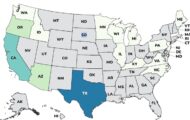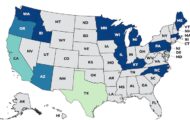The Public Health Agency of Canada is updating its investigation into the Salmonella Enteritidis outbreak linked store frozen raw breaded chicken products. The government is warning consumers that they must follow proper food safety practices when handling, preparing, or eating these products, which include chicken nuggets, chicken strips, chicken burgers, popcorn chicken, and chicken fries.

When these products aren’t thoroughly cooked, they pose an increased risk to people who handle, prepare, and eat them. These foods are often pre-browned and can appear cooked, but they are raw. All frozen raw breaded chicken products and raw chicken pieces must be cooked to an internal temperature of 165°F before they are safe to eat. Whole chickens should be cooked to 180°F.
Since May 2017, the government has been using whole genome sequencing and has investigated 14 national Salmonella Enteritidis outbreaks linked to raw chicken. Food recalls have been issued for nine of these products that are linked to some of the outbreaks.
As of October 26, 2018, there are 474 laboratory-confirmed Salmonella Enteritidis illnesses across Canada. Ninety-people have been hospitalized. Three people have died, but Salmonella was not the cause of death for two of those patients, and it was not determined whether or not Salmonella contributed to the cause of death for the third person.
The case count by province is: British Columbia (38), Alberta (70), Saskatchewan (17), Manitoba (22), Ontario (166), Quebec (107), New Brunswick (25), Nova Scotia (12), Prince Edward Island (2), Newfoundland and Labrador (11), Northwest Territories (1), Yukon (1), and Nunavut (2). The outbreak includes people of all ages and genders.
To protect yourself and your family, follow recall notices and throw out any food that has been recalled. When you prepare raw chicken products, be cautious. Make sure that breading, which may be contaminated with pathogens, doesn’t fall off the chicken and contaminate other surfaces in your kitchen. Use a digital food thermometer to test the final internal temperature. The thermometer should be inserted through the side of the food, all the way to the middle.
Don’t use the microwave oven to cook these products, as heating can be uneven. And wash your hands well with soap and wear before and after handling any raw chicken products.
Symptoms of a Salmonella infection include fever, chills, diarrhea, abdomen cramps, headache, nausea, and vomiting. Diarrhea may be bloody. People are usually sick for a few days. Infections can range from mild to life-threatening.




